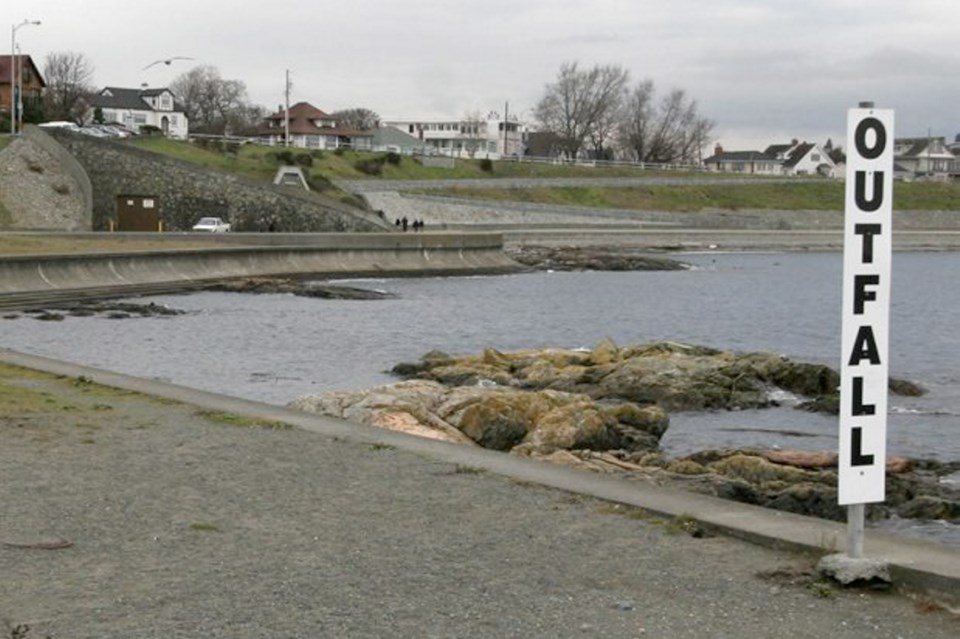Incidents of raw sewage flowing through Greater Victoria outfalls into the ocean will continue “on a regular annual basis” for at least a decade after the new sewage treatment plant is in operation, officials say.
Under normal conditions, all sewage will be treated, but if there’s a major storm, there might be overflows, said Victoria Mayor Lisa Helps, who chairs the Capital Regional District’s core area liquid waste management committee.
“Those big rainy days are rare, but with climate change they may not be as rare,” Helps said.
The capital region’s $765-million treatment system, which includes a 108-megalitre tertiary treatment plant being built at Esquimalt’s McLoughlin Point, is designed to treat effluent flows up to two times the average dry weather flows and discharge the treated effluent through a new outfall, staff say in a report for the committee.
But leaky pipes and improper cross connections — what’s known as inflow and infiltration — mean flows can dramatically increase during heavy rain, with stormwater entering the sewage system.
If the flows are too high — up to three times the average dry weather flows at Victoria’s Clover Point pump station and up to four times at Esquimalt’s Macaulay Point — sewage will receive only primary treatment and then be mixed with fully treated effluent, achieving a secondary treated standard.
Any flows beyond that will only be screened and then pumped raw out to the existing outfalls, says the report.
“On the Clover side of the system this means some overflows will continue on a regular annual basis leading up to 2030 when substantial [inflow and infiltration] reduction efforts are fully implemented,” the report says.
“On the Macaulay side [inflow and infiltration] issues are much less significant, and overflows will only typically occur for storms greater than a five-year return period.”
Problems with inflow and infiltration are more acute on the east side of the sewage system because of older underground pipes in established communities like Victoria. In some areas of Oak Bay, stormwater drainage and sewage were designed to be dealt with in a single line and have to be separated.
CRD staff could not provide estimates of how often overflows might be expected in future years but said the frequency at many locations, such as pump stations, is expected to be “significantly reduced” once pipe upgrades are complete.
The information came as directors were discussing the prospect of upgrading the treatment plant to include disinfection with advanced ultraviolet treatment and oxidation to reduce bacterial contamination.
Disinfection would add an estimated $3.9 million to the capital costs and $80,000 a year in operating costs.
But the value of disinfection is unclear.
While there’s room for disinfection in the new treatment plant, installing a system would likely not have any impact on federal shellfish closures because of contamination from stormwater and wet-weather flows, staff say.
The committee referred the report back for staff to see if there’s any senior government funding for disinfection and to look at the efficacy of disinfection versus other measures that might be taken to improve water quality.



